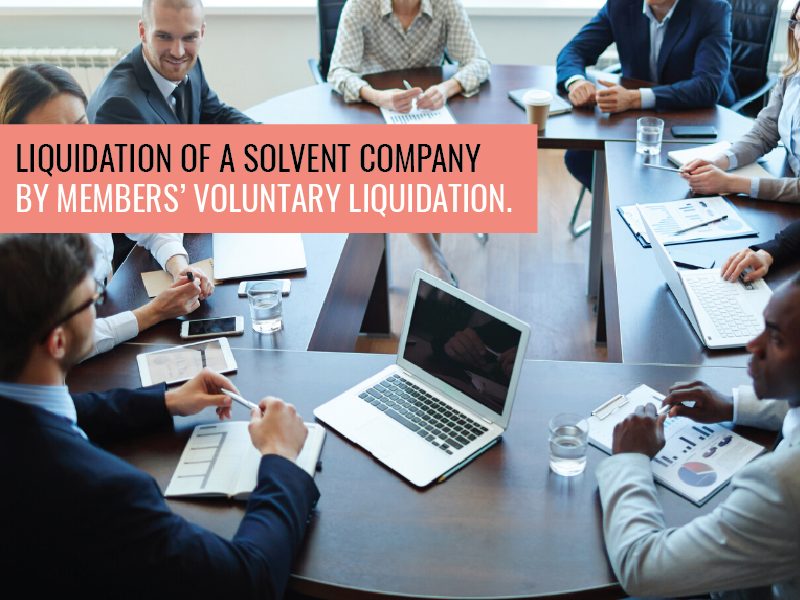
A members’ voluntary liquidation (MVL) is the formal process of winding up a solvent company. During the MVL process, any surplus assets are distributed to a company’s members and the company is ultimately deregistered. The alternative to an MVL is to apply to the Australian Securities & Investments Commission (ASIC) to have a company deregistered.
There can be certain benefits of an MVL as opposed to an application to ASIC for deregistration. So how does an MVL work and what are the potential benefits?
Overview of the members’ voluntary liquidation process
To start the MVL process, a company’s directors consider the company’s financial position and agree that the company can pay its debts within twelve months. The directors then sign and lodge a declaration of solvency and convene a meeting of shareholders to pass a resolution to place the company in liquidation, as well as other necessary resolutions. A Liquidator is then appointed and it is their responsibility to realise assets, pay any debts to creditors, attend to statutory requirements and then distribute any surplus funds to shareholders.
At Pearce & Heers we assist with all aspects of the MVL process. This includes preparing declarations and resolutions for directors and shareholders, preparing notices and meeting documents for the meeting of shareholders, lodging all documents with ASIC and providing general guidance.
Tax benefits of a members’ voluntary liquidation
A large number of MVL appointments are made for tax benefit purposes. There are two main types of tax benefits that an MVL must be used to take advantage of.
The first type of tax benefit arises where a company is carrying or entitled to profits from a pre-capital gains “tax” (CGT) asset. In these circumstances any distribution from the profit from the realisation of a pre-CGT asset will retain its CGT exempt status when funds are distributed to a shareholder. In contrast the profits would be taxed as ordinary income if it were distributed as an ordinary dividend without a Liquidator being appointed. This can result in substantial tax “savings” to shareholder.
The second type of tax benefit arises where there are profits that are subject to the small business CGT concessions. If these profits are distributed by a Liquidator then they retain their character and any small business CGT concessions continue to apply to them. However, if the funds are distributed as an ordinary dividend, they will lose this characteristic and will be taxed in the ordinary way dividends to shareholders are taxed. Again, this can result in substantial tax “savings” to shareholders.
Other potential benefits of a members’ voluntary liquidation
There can also be certain other benefits of an MVL which include:
- In circumstances where there is a dispute between shareholders as to entitlement to funds, the liquidation process can have an independent person appointed (the Liquidator) to review a company’s financial circumstances and make a decision as to how funds should be distributed.
- In certain circumstances there can be some risk minimisation through the MVL process, however, this is a case by case scenario and it is best to discuss this issue with one of our staff.
Destruction of books and records
When a company is deregistered after an MVL, the books and records can be destroyed quicker than if a company was just deregistered, in which case the directors and shareholders are required to retain the records for five years. This is because a Liquidator can apply to ASIC for the early destruction of records, which will then generally be able to occur six months after the date of deregistration.
Contact us for assistance
One of the Partners at Pearce & Heers, Andrew Heers, specialises in providing advice about MVLs and then managing the MVL process for company directors. If you wish to discuss your company’s circumstances with Andrew, please contact him for a free, no obligation, initial discussion.

